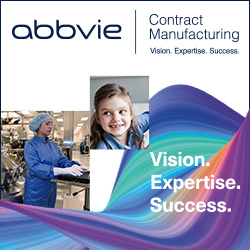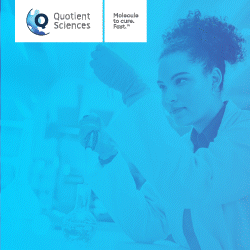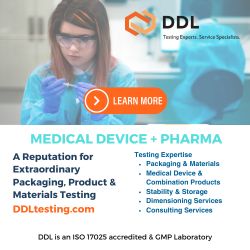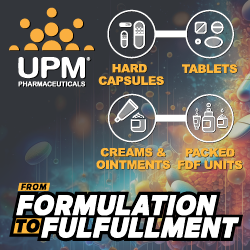Issue:January/February 2025
NEW PRODUCT INTRODUCTION - Addressing the Pitfalls of Progressing From Pilot to Product Through Effective New Product Introduction
INTRODUCTION
Introducing a new pharmaceutical product – new production introduction (NPI) – involves transforming an approved product into a refined product ready for clinical trials or commercialization. It is the cornerstone of successful product development and tech transfer of marketed products.
Whether introducing a completely new product, reformulating an existing formulation, or changing the process or equipment of an existing product, having an effective NPI strategy is crucial to avoid challenges stemming from miscommunication, poor knowledge transfer, or elsewhere. Inadequate planning increases the risk of quality issues during the scale-up of new production processes. Addressing this issue can be costly and time-consuming, delaying project progress.
The following explores the risks and challenges pharmaceutical companies face when undertaking NPI to ensure new products successfully reach the market and patients. It also examines the strategies contract development manufacturing organizations (CDMOs) are adopting to ensure the smooth delivery of these projects from discovery to commercialization.
AN INCREASING RELIANCE ON CDMOS WITH NPI EXPERTISE
Offering potential benefits, including capacity, cost efficiency, access to specialized expertise, and global reach, the pharma industry continues to rely heavily on CDMOs to deliver critical medicines to patients with certainty. This is reflected in the expanding global CDMO market, which was valued at around USD $155.7 billion in 2023 and is expected to grow to USD $291.1 billion by 2032, with a compound annual growth rate (CAGR) of roughly 7.20%.(1)
An integral part of the success of these partnerships is the CDMO’s NPI experience and expertise. Consisting of managing the design and manufacturing of new therapeutics, NPI forms the basis and foundation of success for any commercial or clinical supply project. It is the process of taking an idea for a novel pharmaceutical product from a working prototype to a refined product ready for clinical trial or commercialisation. As a comprehensive process, it involves a series of stages, including design, development, testing, production, and market launch, encompassing both product development and technology transfer.
UNDERSTANDING THE COMPLEXITIES OF NEW PRODUCTION INTRODUCTION
Due to the complexity of product development and technology transfer, delivering innovations from pilot to product can come with several key considerations that must be navigated to ensure NPI success:
Communication is Important
As the project progresses from discovery to pilot to product, communication between each team is critical. Without effective collaboration between teams, siloed working can result in misunderstandings, errors, and delays, potentially impacting product quality and project success. The teams must organize and attend regular meetings to ensure projects remain on track and any risks are quickly identified and mitigated.
Comprehensive Knowledge Transfer is Vital
When a CDMO partner begins supporting a project, development is typically already underway, with customers having a prototype or pre-developed formulation. In the case of tech transfer, the product is often already established.
In these situations, the knowledge related to the products needs to be transferred efficiently and accurately. This could include sharing a detailed technology transfer plan, comprehensive manufacturing descriptions, and technical gap analysis documents. Without access to this information, the CDMO might risk forming the wrong conclusion or will need to spend time and resources repeating the research and development to attain this information.
Preventing these risks relies on strong communication between all parties, ensuring a clear definition of the scope of work, and ensuring those involved are aware of the quality project plan (QPP) before project initiation.
Robust Regulatory Strategies are Necessary
A well-defined regulatory strategy is needed to ensure compliance with relevant regulations, guidelines, and standards. It also guides the compilation of necessary data, documentation, and validation information required for the submission of regulatory documents, such as drug master files (DMFs) and marketing authorization applications (MAAs).
A clear understanding of the regulatory strategy is required throughout product and process development and tech transfer to ensure compliance and mitigate risk. This involves defining the activities needed to demonstrate stability and validation, going hand in hand with defining the QPP and scope of work.
Steps Must be Taken to Ensure Equipment is Like-to-Like
Another common challenge that can impact the success of tech transfer to a CDMO if not carefully navigated is the transfer of processes to equipment that is not like-to-like, for example, if a process is moved from one model of a granulator to another. As a result, process parameters may require adaptation. Process modeling is essential in these circumstances to make sure that even when changing equipment, the process will be run within a defined design space, ensuring accurate and reliable manufacturing.
Inadequate planning increases the risk of quality issues. This is particularly true during the scale-up of new production processes, as pilot-stage equipment may not be compatible with clinical or commercial manufacturing capacity. Addressing this issue can be costly and time-consuming, delaying project progress.
Standard Processes Must be Maintained
Without a project management strategy that follows a standardized process, drug developers and manufacturers cannot expect to keep to timelines and secure success throughout product development and tech transfer.
A structured NPI process relies on having a project management workbook, risk assessments, transparent communication, and collaboration between teams (particularly with governance teams), and stage gating. Having a stage gate process means drug developers and manufacturers can stop during certain tech transfer or development stages to ensure the necessary objectives, activities, and deliverables are met before moving forward. This helps to manage risk, ensure quality, and streamline the transition from one phase to the next.
With the assistance of CDMOs, pharma companies can prevent quality issues, eliminate risks, and have production processes that are scalable from the outset, enabling a seamless journey as the project moves from discovery to commercialization. However, to achieve this, the CDMO needs to apply the right NPI strategy.
STRATEGIES TO DELIVER WITH CERTAINTY THROUGHOUT NPI
To minimize these risks and overcome the challenges of NPI, drug developers must ensure their chosen CDMO partner has a comprehensive and effective plan in place. Effective communication between teams throughout the project’s journey is vital, as is comprehensive technology transfer support to share knowledge and expertise at each stage.
When selecting a CDMO to support NPI, drug developers should carefully consider if their potential partner can offer the following factors needed to secure success:
Applying a Science-led Approach to Ensure Effective NPI
A science-led approach to decision-making is integral to the success of tech transfer and product development, relying on the design of experiments (DoE) and quality by design (QbD) (based on risk assessment and available data) while leveraging statistical tools and modeling. DoE is a powerful tool to optimize formulations and processes, minimizing drug development risks at the earliest stage of the NPI process and enhancing efficiency during scale-up from bench to clinic to commercial. As a result, quality is built in from the beginning and helps to ensure that products meet their quality target product profile (QTPP). A CDMO backed by a dedicated network of scientists can provide vital support in delivering in this area.
When applying a fact-based approach from the start of the product development or tech transfer project, the CDMO must evaluate all the processes and materials. This includes examining the critical process parameters (CPPs) and material attributes to gain a greater understanding of how they are related to the quality attributes. A supporting risk assessment can further help developers and manufacturers identify the critical parameters of the process and quality attributes.
The CDMO can leverage a statistically supported trial design to confirm the critical parameters and attributes identified. Consequently, those then will be used to define the design space. The knowledge obtained from the trials can be used when upscaling to determine the best process for commercial production independent of the used equipment size or type.
A structured project management process and a scientific approach based on DoE principles, help assess and address risks and identify and quantify the influence of critical parameters. With this approach, the CDMO can have a prototype formula suitable for the desired manufacturing process after 1-2 days, consuming only a small amount of API.
An Example: A Science-led Approach to OSD Manufacturing: In oral solid dose (OSD) manufacturing, tablet, capsule, and granular formats require powder with suitable flowability. A powder’s flowability will consist of a two-digit number of different impact parameters, including particle size, particle shape, loss on drying, porosity, and density. It is critical to investigate the quantitative impact of these parameters flowability of the powder.
Within a powder characterization lab, CDMOs can measure the different parameters in a scientific-approach trial design using a few grams of active pharmaceutical ingredient (API) to identify the critical components impacting flowability. From an excipient database, the CDMO can then select suitable excipients to enhance flowability and use this to design the formulation in silico. The formulation can then be blended for prognosis to verify the improvement in flowability, with the CDMO iteratively changing the formula based on the measurements to maximize the success rate.
Global Project Management
To standardize tech transfer processes and increase efficiency, global CDMOs with multiple locations to support customers must consider implementing a project management organization with harmonized rules and structure. Working with the local teams, the global project management organization can provide state-of-the-art tech transfer processes applied with rigor and discipline. The project should follow a structured yet malleable development process of continuous monitoring and rigorous controls to deliver efficacious and safe therapeutics at speed.
Efficiency & Resource Leverage
By leveraging resources across the organization, CDMOs can minimize hands-on time and ensure projects can be completed more quickly and effectively. With a scientific network that is efficient and adept at transitioning between facilities with a clearly defined handover, the right CDMO partner can minimize delays by guaranteeing the prompt communication of knowledge to the right expert at the right time. This can drive time and cost savings for drug developers, helping to deliver critical therapies to patients sooner.
Experience
CDMOs with a long history of performing tech-transfer between their sites as well as to and from third parties will understand how to scale up, tech-transfer, and validate processes rapidly with a focus on product quality. A strong track record of smooth tech transfers can provide drug developers with the confidence that their CDMO partner will onboard their small and large molecule projects seamlessly.
Comprehensive Support
By supporting all aspects of the tech-transfer process, from consideration of the equipment available at the new site and understanding critical process parameters, to handover of manufacturing and quality control methods, CDMOs can ensure the transfer process is as smooth and seamless as possible.
Forming the foundation for the success of any product development or tech transfer, CDMOs must also be able to support technology and scale, offering all the technologies in small, pilot, and full scale.
Transparency
Complete transparency is critical during the tech transfer process. All process documentation, including successful runs and any failures or issues, must be made fully transparent between parties to ensure complete information transfer. This relies on clear and frequent communication between parties and teams.
Harnessing effective communication, collaboration, and process management, the right CDMO can scale, transfer, and validate processes rapidly while mitigating risks and complying with stringent regulations.
UNLOCKING THE SECRETS TO EFFECTIVE NPI IN THE FUTURE
As increasing numbers of pharma companies seek partnerships with CDMOs in the future to alleviate needs for capacity, expertise, and global access, drug developers must carefully consider whether their prospective partners can deliver NPI success. Effectively navigating the complexities of NPI requires careful planning, open communication, and robust project management. By partnering with a CDMO that applies a fact-based approach, has a global project management organization, and offers comprehensive support, pharmaceutical companies can overcome the challenges of NPI and bring their products to the market with certainty.
REFERENCE
- https://www.zionmarketresearch.com/report/pharmaceutical-cdmo-market
Total Page Views: 3849












